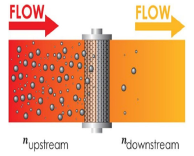Moisture Contamination in Oil: Hidden Threats to Your Machinery's Lifespan
Introduction
Moisture contamination in oil is one of the leading causes of equipment failure in industrial machinery, hydraulics, and lubrication systems. Even small amounts of Moisture can lead to severe consequences, from corrosion to inefficient lubrication. As a result, understanding the causes, effects, and prevention strategies for Moisture contamination in oil is crucial to ensuring the longevity and performance of machinery.
In this article, we will explore how Moisture infiltrates lubricants, the risks it poses to your machinery, and how to manage and prevent Moisture contamination for optimal equipment performance.
How Does Moisture Contaminate Oil?
Moisture contamination in oil can occur in several ways. Understanding the primary sources of contamination is the first step in managing and preventing it effectively.
Common Sources of Moisture Contamination:
- Condensation:
In machinery that operates at varying temperatures, condensation is a common cause of Moisture contamination. When oil cools, Moisture vapor condenses inside the system, mixing with the lubricant. - Leaks in Seals and Gaskets:
Over time, seals and gaskets in equipment wear out, creating pathways for Moisture to enter. This is especially problematic in humid environments where external moisture can seep into the system. - Humidity Ingress:
Air moisture, particularly in humid conditions, can contaminate oil if systems aren’t properly sealed or if desiccant breathers are not in place.
Types of Moisture Contamination in Oil:
- Free Moisture:
Free Moisture forms when the oil is oversaturated and Moisture settles at the bottom of the tank or system. This is the easiest type of contamination to detect but requires prompt action. - Emulsified Moisture:
Moisture can also become emulsified in oil, creating a mixture that’s harder to separate. This happens when Moisture is broken down into small droplets and suspended within the lubricant. - Dissolved Moisture:
Moisture that dissolves in oil is often invisible to the naked eye but can cause significant damage over time, especially in high-precision systems like hydraulics and turbines.
The Consequences of Moisture Contamination
Moisture contamination in oil can have dire effects on machinery performance. Even minor contamination can lead to major issues, reducing operational efficiency and increasing the risk of failure.
1. Degradation of Lubricant Properties:Moisture alters the viscosity of oil, reducing its ability to lubricate effectively. The presence of Moisture reduces the oil's ability to reduce friction and wear, leading to higher temperatures and increased wear on internal components.
2. Corrosion and Rust Formation:Moisture in oil can react with metals, forming rust and corrosion. This damage can result in costly repairs and downtime. Corroded components may need to be replaced, leading to significant financial losses.
3. Accelerated Wear and Tear of Components:The combination of Moisture and oil can lead to an increase in abrasive wear. Moisture contamination accelerates the breakdown of lubrication and increases the friction between moving parts, leading to premature wear and failures.
4. Increased Risk of Equipment Failure:Ultimately, Moisture contamination in oil can cause catastrophic failures if left unchecked. Machines may break down unexpectedly, leading to production halts and safety hazards.
5. Detecting Moisture Contamination in OilDetecting Moisture contamination in oil is crucial to avoiding costly repairs and extended downtime. Here are a few common methods to detect Moisture in oil:
6. Visual Inspection:One of the simplest methods is to inspect the oil for any discoloration or separation visually. If free Moisture is present, you may notice a layer of Moisture pooling at the bottom of your oil container.
Advanced Testing Techniques:
- Karl Fischer Titration: This is a precise method of measuring Moisture content in oil. It can detect even small traces of Moisture, making it ideal for high-precision applications.
- Crackle Test: When small amounts of Moisture are present, the oil will make a cracking or sizzling sound when heated. This test is particularly useful for detecting emulsified Moisture.
- Moisture Content Sensors: Modern sensors can continuously monitor the Moisture content in oil, alerting operators to contamination before it causes damage.
Prevention Strategies for Moisture Contamination
Prevention is always better than cure, and there are several strategies to minimize the risk of Moisture contamination in oil:
1. Sealing Systems and Design Improvements:
Ensure that all seals and gaskets are in good condition to prevent leaks. Using higher-quality
sealing systems or retrofitting your equipment can also reduce the ingress of Moisture.
2. Proper Storage of Lubricants:
Store lubricants in sealed containers and in environments with controlled humidity levels. This
minimizes the risk of condensation and prevents external moisture from contaminating the oil.
3. Use of Desiccant Breathers:
Desiccant breathers absorb moisture from the air, preventing humidity from entering the system.
This is an effective strategy, particularly for outdoor machinery exposed to fluctuating weather
conditions.
4. Monitoring and Maintenance Best Practices:
Regularly check and maintain machinery to detect potential sources of Moisture contamination early.
Schedule routine oil checks and implement a proactive maintenance schedule to ensure seals,
breathers, and other components are functioning properly.
Solutions to Remove Moisture Contamination
If Moisture contamination does occur, prompt action is necessary to remove it and restore the oil’s effectiveness.
1. Centrifugation:
This process uses centrifugal force to separate Moisture from oil. It is an effective method for
removing free Moisture and emulsified Moisture from larger quantities of oil.
2. Vacuum Dehydration Units (VDUs):
VDUs use vacuum pressure to remove dissolved Moisture from oil. This is an ideal solution for
high-performance systems that require extremely low moisture levels.
3. Absorption Filters and Moisture Removal Additives:
Moisture removal additives and absorption filters can also be used to eliminate Moisture from oil,
particularly in systems where complete removal is essential.
Cost Implications of Moisture Contamination
Moisture contamination can be expensive. The direct costs include repairs, replacement of damaged components, and additional lubrication costs. Indirect costs, such as unplanned downtime, reduced productivity, and increased energy consumption, can also add up quickly. The key to avoiding these costs is early detection and prompt action.
Conclusion
Moisture contamination in oil is a hidden threat to your machinery’s lifespan. It can cause severe
damage, including corrosion, reduced lubrication effectiveness, and premature wear. However,
with the right detection methods, preventive strategies, and removal solutions, you can protect
your equipment and avoid costly failures. Regular monitoring and proactive maintenance are
essential to keeping your systems running smoothly and extending their operational life.
By addressing Moisture contamination in oil head-on, you ensure that your machinery remains
reliable, efficient, and cost-effective.





